High speed rail • Urban transport • Technology • Maglev
Note: For educational purpose only. This page is meant purely as a documentation tool and has no legal effect. It is not a substitute for the official page of the operating company, manufacturer or official institutions. It cannot be used for staff training, which is the responsibility of approved institutions and companies.
👉 (Version française disponible)
Introduction
At a time when the whole world is watching the Hyperloop projects with circumspection, it is useful to take a look at another rail technology: magnetic levitation, which Europe seems to have forgotten for good…
Maglev technology – Magnetic Levitation – is a concept in which the train runs on a magnetic field. The basic principles – two opposing magnets – were already known in the 19th century. The magnetic levitation train did not really come into use until the 1960s. It does not specifically mean a high-speed train. In 1984, in Birmingham, a train operated as a monorail on an elevated section of track some 600 m long between Birmingham airport and Birmingham International Railway station, at a speed of up to 42 km/h. But this unique British example was closed in 1995 due to reliability problems.
In the vast majority of cases, however, the magnetic levitation train remains well studied in the context of high-speed rail, which seems to be its raison d’être. This is why this technology was still proposed when Great Britain launched preliminary consultations to find out what type of train would link London to the north of the country. Maglev was quickly ruled out because of the great uncertainty surrounding its technical and financial feasibility, in favour of a conventional high-speed line, HS2. Following the failure of trials in Germany, there is no longer any project of this type in Europe. On the other hand, Maglev, the magnetic levitation train, is now active in six places in Asia, the only continent that still believes in it. This is an opportunity to analyse this technology in more detail.
At present, it is possible to enjoy the pleasures of magnetic sustentation in places far from Europe. Note that these examples are often local transport:
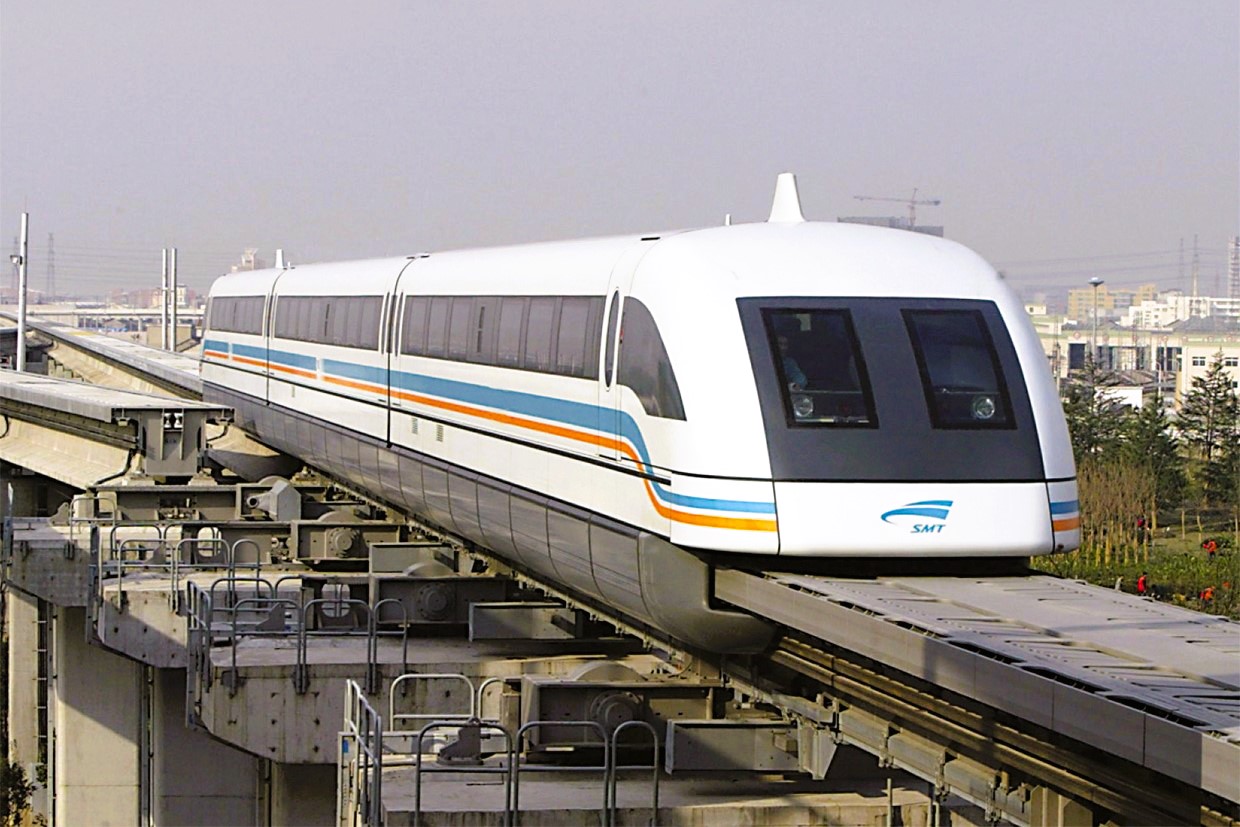
Shangaï – China
2002 – …

Nagoya – Japan
2005 – …
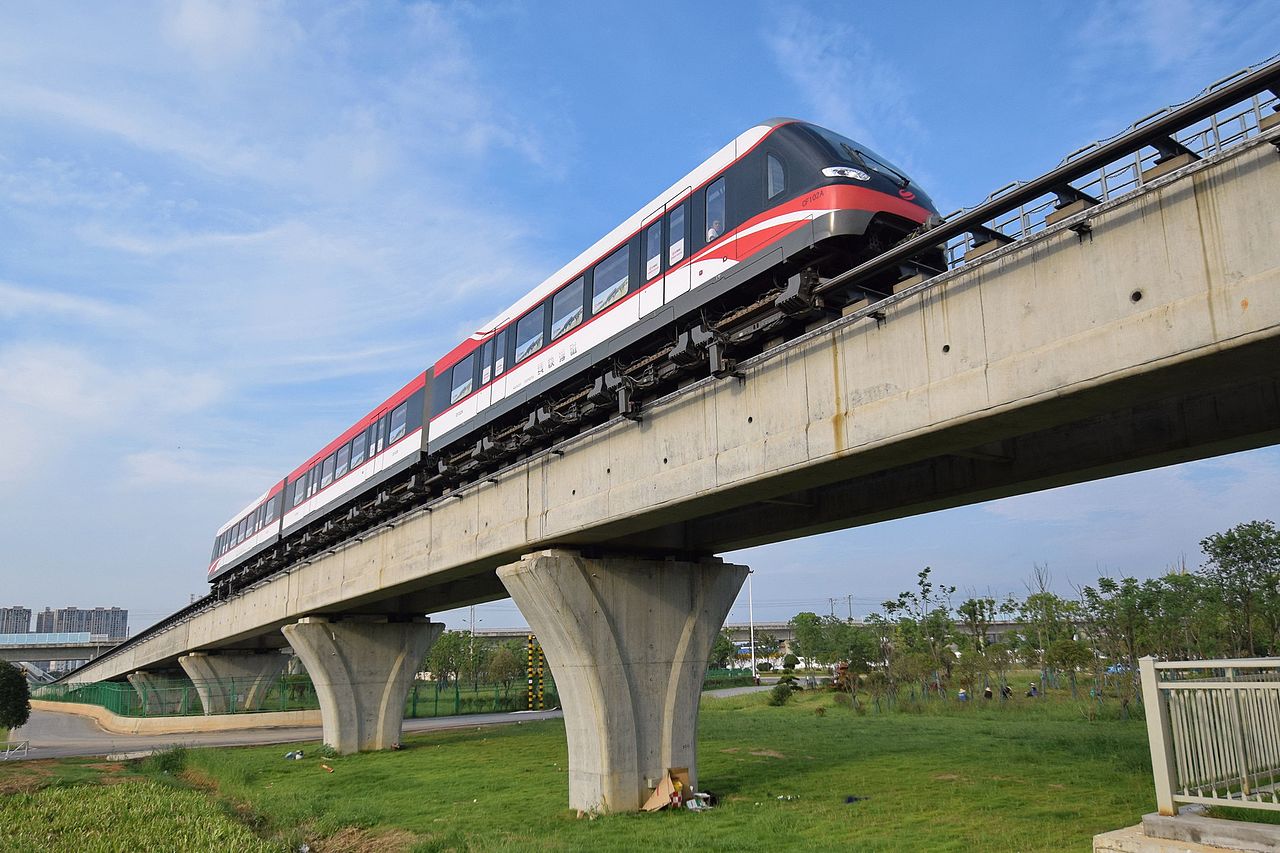
Changsha – China
2016 – …

Séoul – South Korea
2016 – …
Current and future projects
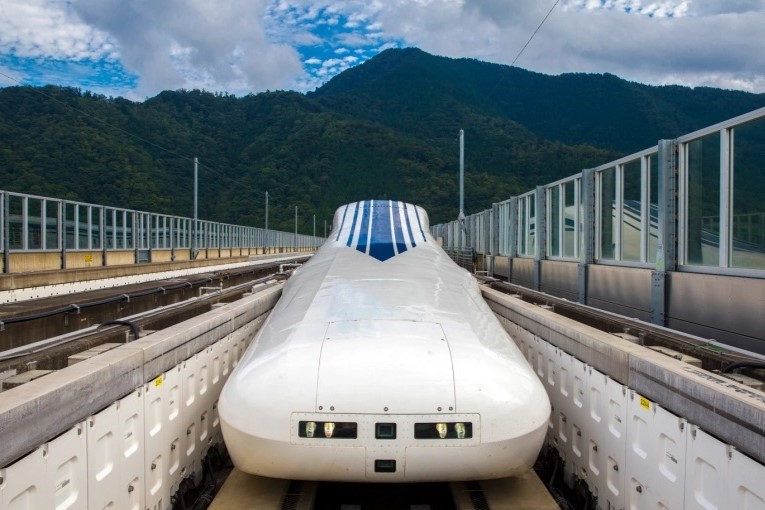
Japan
… – …
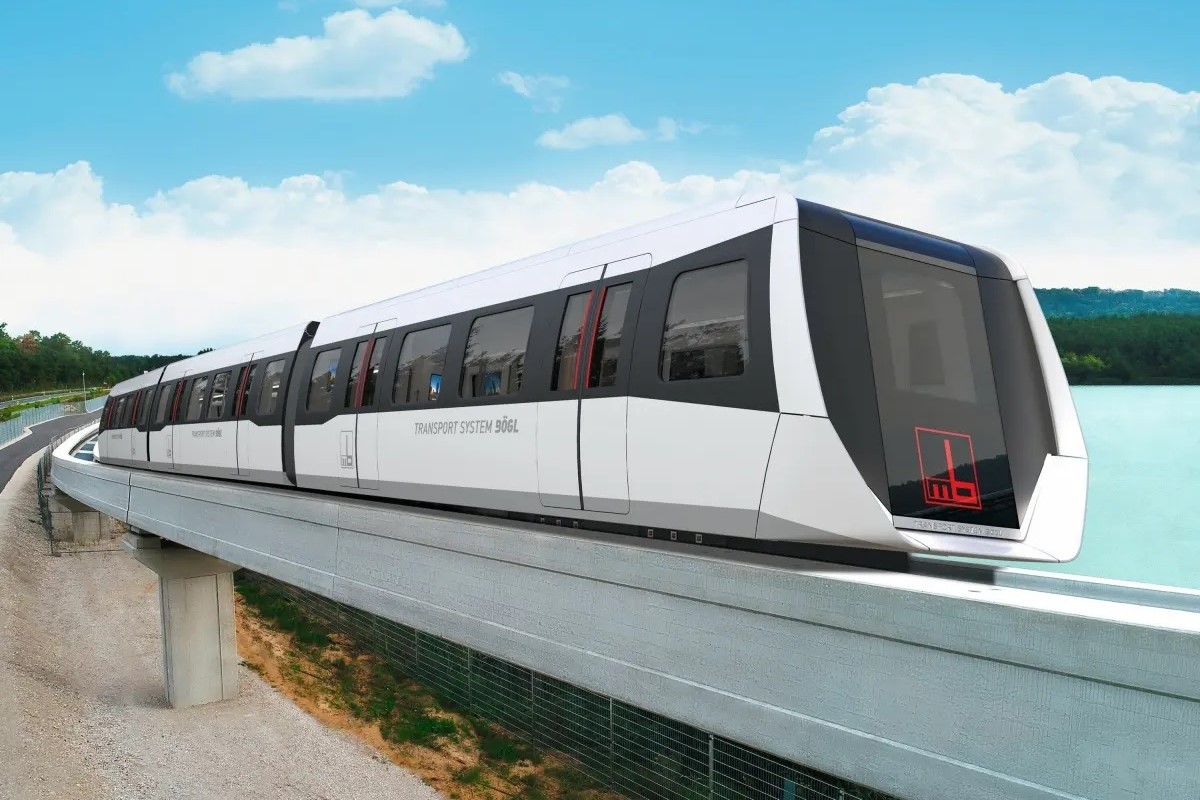
(developed in Germany)
… – …
A brief history of magnetic levitation
As long ago as the 1750s, John Mitchell discovered that magnets repelled each other when the same poles moved towards each other. This well-known phenomenon was not discussed at a transport level until 150 years later, around 1900. Emile Bachelet and Frank Goddard then imagined a vehicle capable of moving by magnetic levitation, but no plans were drawn up for this project. In 1922, the German Hermann Keper began research into magnetic levitation by building a working circuit and was awarded a patent by the Reich in 1933. At the end of the 1940s, an engineer from Imperial College London, Eric Laithwaite, developed the very first working model of a linear induction motor.
The 50s and 60s are interesting in more ways than one: after 140 years of steam traction, trains were wondering about the future of their technology, while aviation and the motor car were making significant progress. European networks were looking for both more power and more speed, and opted for a more traditional and less disruptive technology: overhead catenary electrification. America in the 1960s was the era of the Apollo programmes and the conquest of space. Trains were no longer as attractive a technological option as they had once been.
However, at the other end of Asia, Japan had already been studying Maglev technology since 1962, while in 1964 the country inaugurated the world’s first high-speed train using conventional rail-wheel technology, which was better mastered. In 1969, the country began various tests with HSST (High Speed Surface Transport).
Meanwhile, in 1966 in the United States, Maglev technology was once again the subject of research by two physicists at Brookhaven National Lab (Long Island). James Powell and Gordon Danby published an article on superconductor technology, the power of which could be used to lift heavy “railway-type” vehicles. They obtained an official patent in 1968, but despite considerable promotional efforts, Maglev technology attracted little interest in the United States.
In the UK, Eric Laithwaite, who became Professor of Heavy Electrical Engineering at Imperial College in 1964, continued the successful development of the linear motor. In the early 1970s, Laithwaite discovered a new magnet arrangement that allowed a single linear motor to produce both forward and reverse thrust, enabling a maglev system to be built with a single set of magnets. Working at the British Rail Research Division in Derby, with teams from several civil engineering firms, the ‘cross-flow’ system was developed into a working system.
By the end, it was Germany that took the lead in Maglev technology. Developments were undertaken with aircraft designer Ludwig Boelkow at MBB and Krauss-Maffei. In 1967, Stefan Hedrich founded the Society for Railway Technology Innovation, in which researchers and companies agreed to coordinate the development of the Maglev train. In 1969, the German federal government commissioned a study to examine the possible use of magnetic levitation technology. Thyssen Transrapid was subsequently awarded a contract.

MBB (now Airbus Group) presented a passenger transport demonstrator on 6 May 1971 at the Ottobrunn Exhibition near Munich, which can be considered to be the Transrapid 01. In the same year, Krauss-Maffei presented the Transrapid 02 on its own test track in Munich-Allach, giving rise to the name of all subsequent vehicles. In 1972, AEG-Telefunken, Brown, Boveri and Siemens developed an EET 01 prototype with superconducting coils, which was tested on a 900 m long circular track in Erlangen.
Following favourable test results for the electromagnetic levitation system, the Transrapid 02 was exhibited at the EXPO Paris show from 4 to 9 June 1973. Another technique was then tried with the Transrapid 03, with the development of an air-cushion vehicle powered by a linear motor. The air cushion worked like a hovercraft to keep the train above the ground. This technology proved to be very inefficient and too noisy, and was quickly abandoned. The successor to the Transrapid 02 was the Transrapid 04, which used the same levitation technology as initially. In 1974, Thyssen Henschel (now ThyssenKrupp AG) and the TU Braunschweig developed the long-stator technology. Construction of the famous elevated test track at Lathen in Emsland began in 1980.
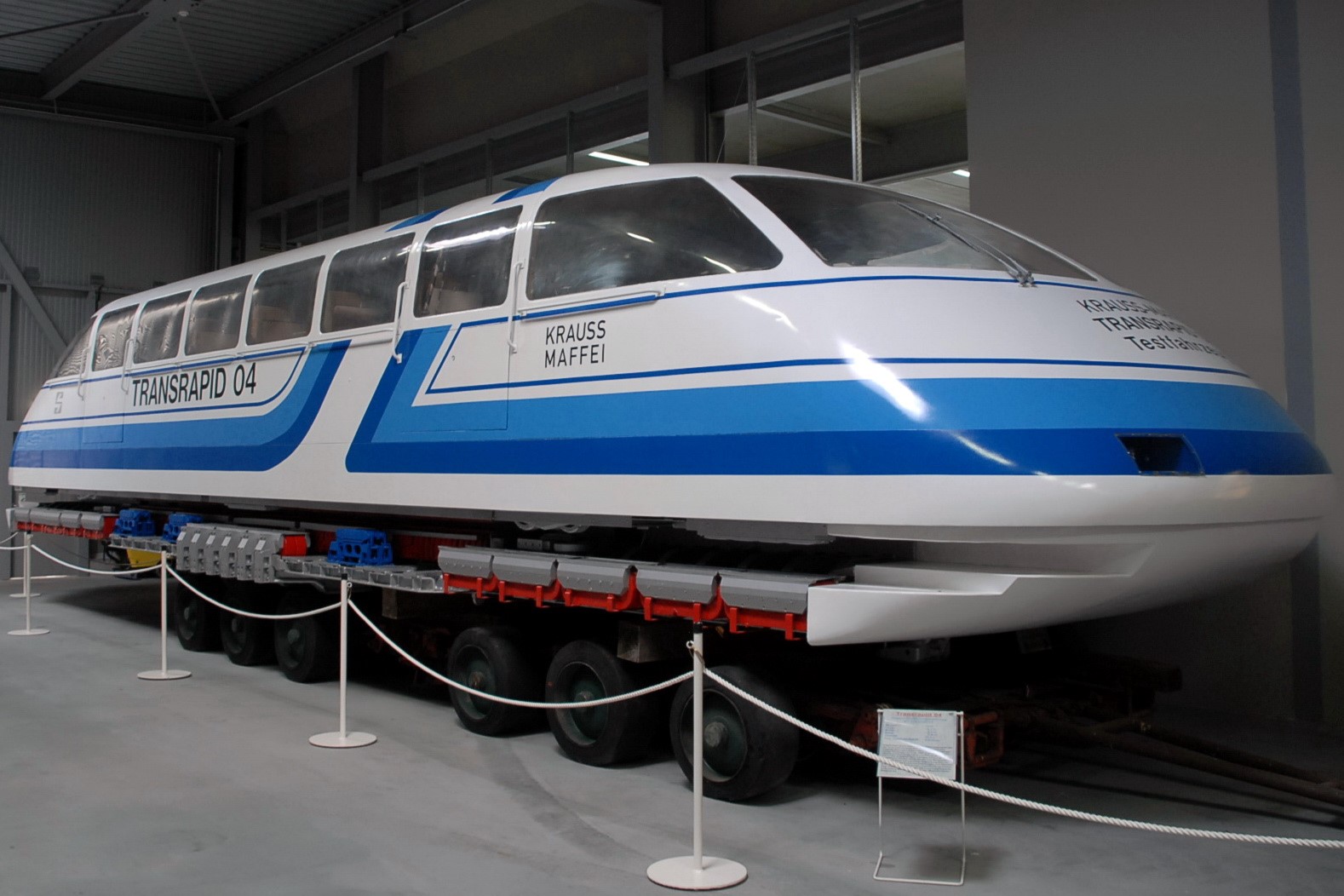
Developments in the UK
Developments were also undertaken in Britain, with the construction in 1970 of a track made up of several kilometers of concrete beams along the Old Bedford River in Cambridgeshire.
The British liked to call it a ‘hovertrain’ because it combined precisely what the Germans had tried in 1973, the linear motor and hovercraft techniques. The aim was to produce a train system that would provide an inter-city service at 400 km/h with – it was optimistically thought – lower investment costs than other high-speed solutions. You have to think back to the early 1970s, when the hovertrain, with its sci-fi design and unusual technology, arrived at a time when governments and engineers around the world were trying to figure out how to reinvent train travel for the modern age. This at a time when France was launching its TGV studies using good old-fashioned rail/wheel technology, after competing briefly with Bertin’s aerotrain.
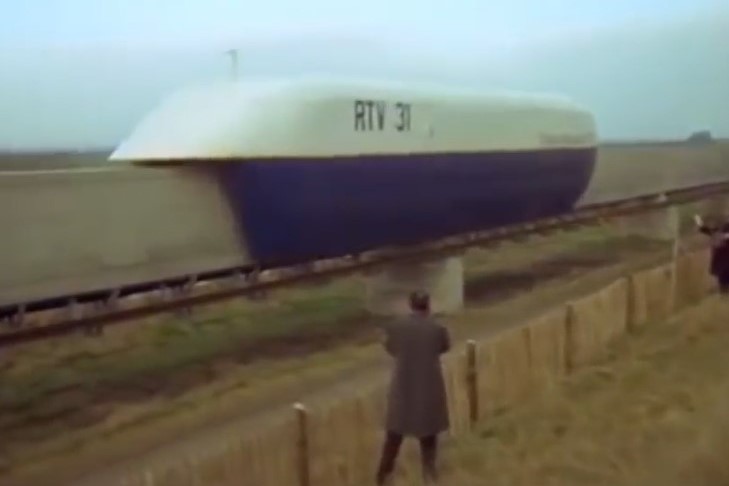
It was already apparent that the linear induction motor (LIM) technique required the construction of a track in the form of a concrete beams, i.e. an elevated track. A 6.4km section was laid along the Old Bedford river and a first test took place on 7 February 1973, at a time when rumours were announcing the imminent abandonment of magnetic levitation projects by the British government. As in France, at the time the test track was being built, British Rail was well advanced with its Advanced Passenger Train (APT), attracting even more media interest…
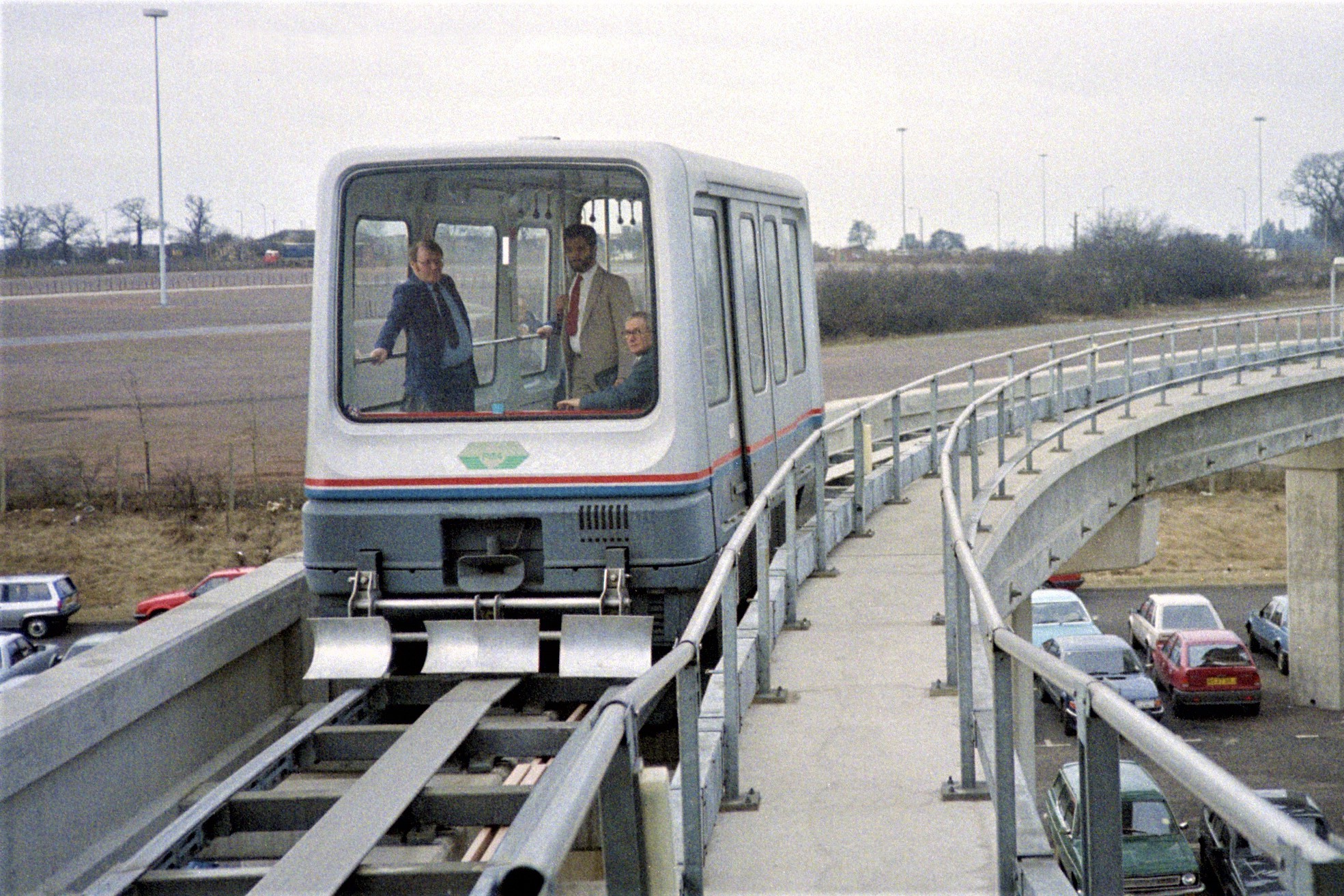
The hovertrain was officially abandoned a week after the test, while the Germans did the same with the hovercraft technique (see above). The RTV 31 was eventually stored outside Cranfield University for 20 years before being transferred to the Railworld Museum in Peterborough, where it remains today.
The dream of a British Maglev wasn’t over, however, thanks to Birmingham Airport’s out-of-class shuttle, which had the honour of being the world’s first commercial Maglev. Research funded by the British government at the British Rail Research Division laboratory in Derby led to more controlled solutions in the form of low-speed local transport, moving away from the high-speed option. Contracts were awarded in 1981 to a consortium of GEC, Balfour Beatty, Brush and Metro-Cammell, under the name “People Mover Group”. The system opened on 16 August 1984 on 600 metres of track with modules “flying” 15 millimetres from the guideway. The line operated successfully for almost 11 years, but problems with the obsolescence of the electronics and a lack of spare parts made it unreliable. It operated until 18 June 1995, when it was replaced by a cable system.
Before going any further into this history, it is worth noting two things:
- Firstly, there is the difference between designs for high speed and those intended for local transport at low speed, often for demonstration purposes or temporary operation;
- Secondly, there is a difference between monorail designs on inverted concrete T tracks and those using side guide rails.
Developments in Japan
In the midst of an economic boom, the country was also dreaming of a different way of using the train. In the early 1970s, Narita airport was being built far from the city centre, which led to the development of independent access transport. Nippon Airlines studied “innovative” transport systems, paying particular attention to the magnetic levitation railway that was being developed in Germany. A number of other experiments took place, most curiously in the air transport sector.
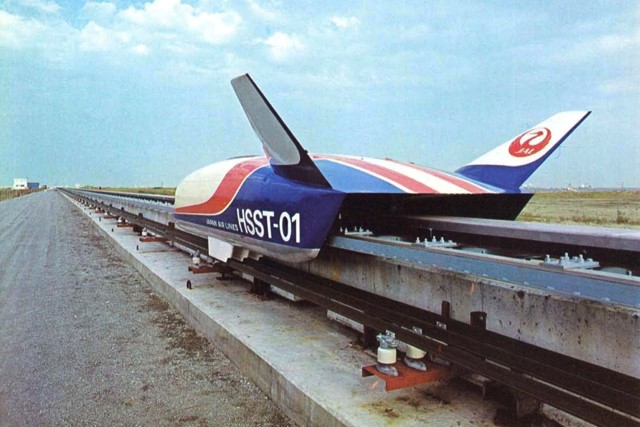
In 1975, experiments began on a 200m straight line in Shinsugita, Yokohama. An experimental unmanned vehicle, called HSST-01 and driven by a linear induction motor, was tested there. However, the acceleration was insufficient due to the limitation of the total length of the test line for speed tests of 250 km/h or more. Next came the construction of a 1,300 m experimental line on Higashi-Ogijima, near Kawasaki, where the HSST-01 set a record with 307.8 km/h in 1976. In 1979, government subsidies enabled the line to be extended to 1,600m, with curves and slopes to better represent the terrain. The Higashi-Ogijima experimental phase ended in March 1981. Successors to the HSST-01 were tested, but with a view to local traffic.
By the 1980s, the Maglevs were essentially experimental and more like demonstration vehicles, with the notable exception of Birmingham. The great dream of a high-speed machine halfway between a plane and a train seemed to be slowly fading away, and many governments around the world were no longer funding research in this area. Only Germany is still interested, while France launched the first TGV on 27 September 1981.
Developments in Germany
Germany knows how to bring its industrial entities together and get them to work together. As early as the 1970s, the Ministry of Research and Technology had associated MBB with Krauss-Maffei under the name of Arbeitsgemeinschaft Transrapid-EMS, which in 1973 brought out the Transrapid 04 with a linear motor that reached 205.7 km/h by the end of 1975. It became clear that the Transrapid needed a more substantial test track. The Magnetbahn Transrapid consortium was founded in 1978 by the merger of MBB, Krauss Maffei and Thyssen Henschel.
The aim was a fully functional test facility to bring electromagnetic levitation technology to series production. The timing was perfect: the International Transport Exhibition was scheduled to take place in Hamburg in 1979. Over a length of 908m, the newly-built Transrapid 05 was able to carry a total of 50,000 visitors through the exhibition grounds at 75 km/h. It was the first magnetic levitation train.

The M-Bahn in Berlin
The M-Bahn was a local Maglev train that was trialled from 1984 in what was still West Berlin. The foundation stone for Berlin’s M-Bahn was laid in June 1983 and the first test runs began in 1984, between the Gleisdreieck underground station and Kemperplatz. The system was developed by the Technical University of Braunschweig and the electricity company AEG. The first purpose-built M-Bahn carriages arrived in 1986, but the first journeys were not made until August 1989, when passengers were not charged as the service was still being tested. In July 1991, the M-Bahn was integrated into Berlin’s public transport system. The events following the fall of the Berlin Wall and the arrival of a new SPD coalition at the head of the Land, which cancelled the €7 million subsidy previously granted, rendered the project obsolete. The whole complex was dismantled in the years that followed…
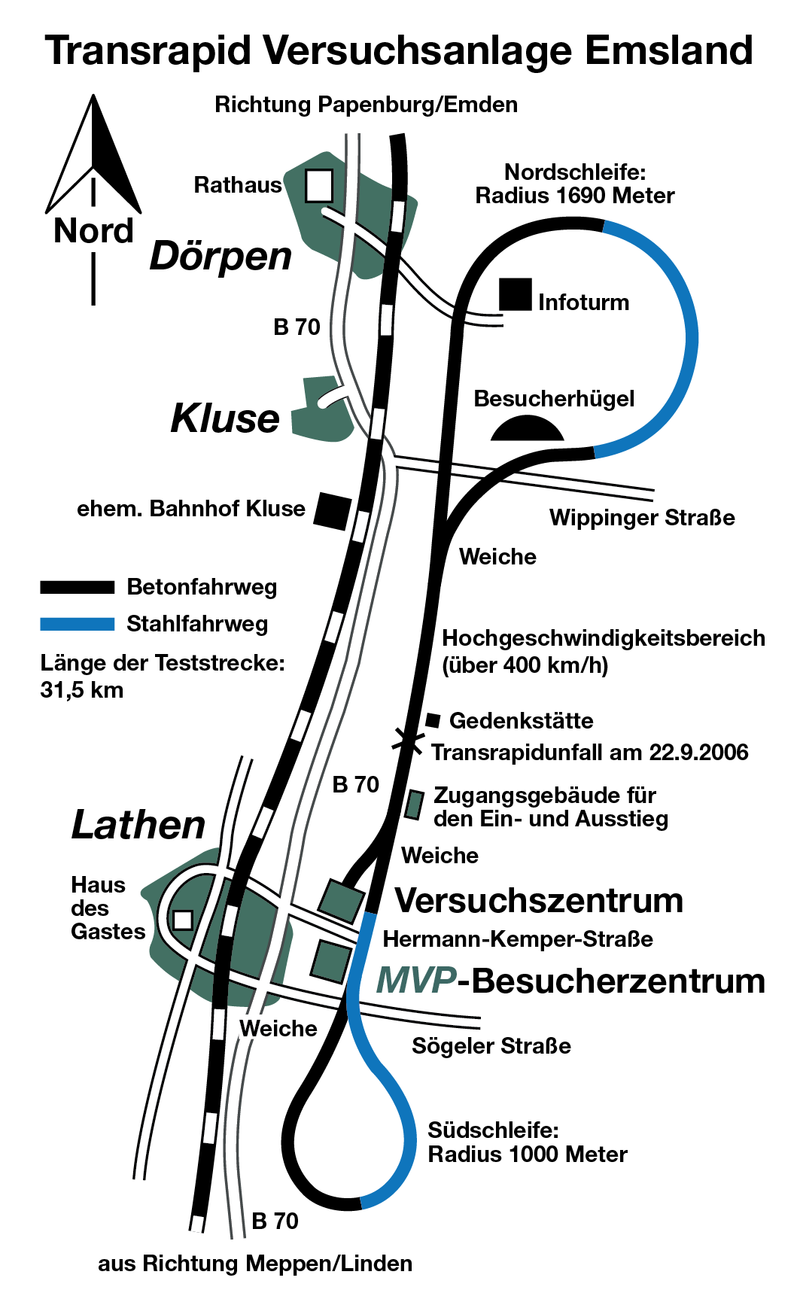
The Emsland’s loop
The Emsland Transrapid Test Facility (Transrapid-Versuchs-anlage Emsland, TVE) was built to the west of Bremen, not far from the Dutch border. The 31.5km facility was built in two phases between 1980 and 1987 by industry with support from the Federal Research Ministry. It comprises a straight line and two turning loops at the ends. Meanwhile, the Transrapid 06 (remote-controlled) ran for the first time on 30 June 1983. This German project was clearly the most accomplished of all those that existed in the 80s and was aimed solely at high speed, just as the country was preparing to launch its ICEs in rail/wheel technology. In October 1984, the Transrapid 06 set a new speed record, reaching 302km/h. The complete completion of the test track enabled the Transrapid to be tested further. In June 1993, the Transrapid 07 set a new record by reaching a speed of 450km/h. In 2000, the test installation was presented as part of a regional Expo 2000 project. In 2005, the Transrapid 08 and the test track were approved for use without a driver.
But the terrible accident at Lathen on 22 September 2006 shattered the optimism surrounding magnetic levitation, although this terrible event, which claimed 23 lives, had nothing to do with Maglev technology itself. Operations were suspended until July 2008, after which a new Transrapid, the 09, was approved in July 2009. The expiry of the 2005 programme – which was valid for 5 years – heralded the end of the test site’s function. The State, the Federal Government and the industry agreed to a final operation of the test route until April 2010. It became clear that a test facility would no longer be needed for future developments. Of the companies involved in the construction of the Transrapid, only the construction company Max Bögl, which was studying the construction of the track, expressed its willingness to participate in the subsequent financing of the test facility. Dismantling will not begin until the end of 2019.
Developments in China
The Transrapid line in Shanghai is the first commercial application of the Transrapid system, based on the extensive data from the Emsland trials in Germany. On 30 June 2000, the German (Schröder era) and Chinese governments signed an agreement to conduct a joint feasibility study of the Shanghai Maglev, involving the companies Max Bögl, Siemens AG, ThyssenKrupp Transrapid GmbH and Transrapid International GmbH & Co. In 2001, on the basis of the feasibility study, a first draft design for the project was completed with an agreement on technology transfer. The line was inaugurated on 31 December 2002 and remains the only major commercial project to date.
Elsewhere, in Korea and Japan, projects are underway. But we’re no longer talking about history, we’re talking about today’s world. The following pages describe current developments… 🟧
[TOP]
High speed rail • Urban transport • Technology • Lexical
